5 Feeding Techniques for Tajima Cattle to Boost Kobe Beef Quality
Specialized feeding techniques for Tajima cattle, like precise nutrition plans and controlled feed timing, ensure the exceptional quality of Kobe beef.
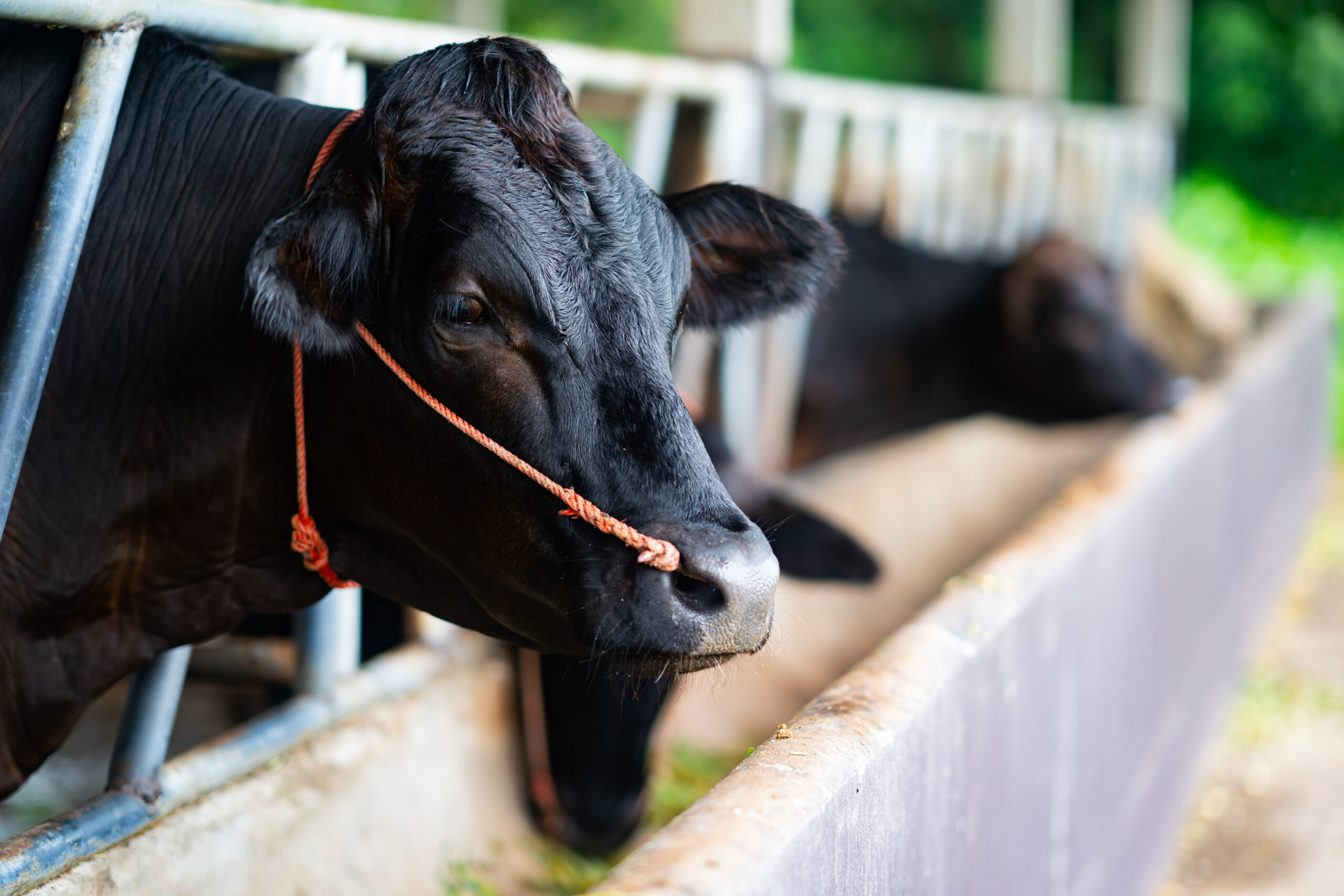
Imagine diving into the world of Tajima cattle, the prestigious breed behind Japan’s famous Kobe beef. You’ll discover how specialized feeding techniques are key to producing their incredibly tender, flavorful meat.
Disclosure: As an Amazon Associate, this site earns from qualifying purchases. Thank you!
Historical Feeding Practices for Tajima Cattle
Understanding how Tajima cattle were historically fed is crucial to appreciating why their meat, notably Kobe beef, stands out worldwide for its quality and flavor.
Traditional Diet Components
Historical diets for Tajima cattle primarily consisted of local grains, forage, and grasses, crucial for their muscle development and the marbling that Kobe beef is famed for. This diet featured staples like rice straw, which provided essential nutrients and energy sources. Spring water, rich in minerals, also plays a vital role in their hydration and overall health. The inclusion of beer or sake in the diet, though anecdotal, was believed to enhance appetite and improve meat quality.
Evolution of Feeding Techniques Over Time
Over the centuries, the feeding techniques for Tajima cattle have evolved significantly. Originally relying on the natural grasslands of Japan’s Hyogo Prefecture, the technique shifted towards a more controlled and refined regimen. Farmers began incorporating specialized feeds to enhance marbling, which includes a mix of high-energy feed like corn and soybeans, introduced in the late 19th century. This evolution reflects not just changes in agricultural practices but also a deepening understanding of cattle nutrition and its direct impact on meat quality. This strategic feeding approach ensures the unique taste and texture of Kobe beef, maintaining its prestigious reputation in the global culinary scene.
Current Tajima Cattle Diet Composition
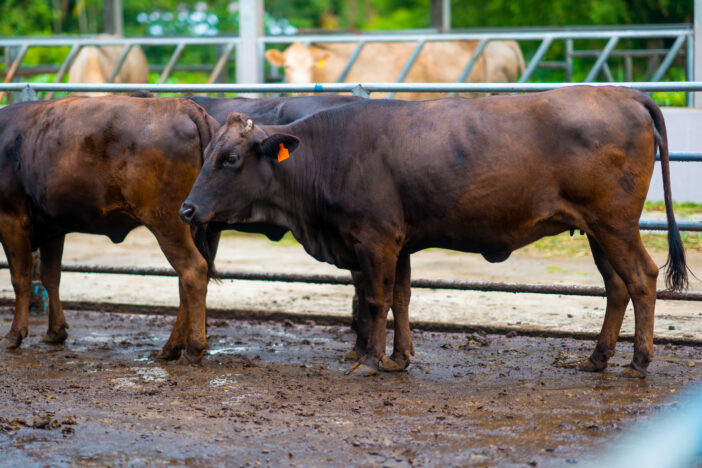
Building on the evolution of their feeding techniques, today’s Tajima cattle benefit from a carefully balanced and nutrient-rich diet. This diet promotes the famed marbling that distinguishes Kobe beef. Here’s an insight into the current diet composition of Tajima cattle.
Primary Ingredients in Tajima Cattle Feed
- Corn and Soybean: These staples provide the high-energy base necessary for the cattle. Rich in carbohydrates and proteins, corn and soybeans help in the growth and maintenance of muscle tissue.
- Oats and Barley: Serving as additional sources of calories, oats, and barley contribute to the formulation of energy reserves that enhance marbling in the beef.
- Wheat Bran: High in fiber, wheat bran is crucial for the digestive health of the cattle, ensuring that all other nutrients are effectively absorbed.
- Forage: Mainly composed of grass and hay, forage is vital for the proper rumen function and overall health of the cattle. It provides bulk and roughage, which aid in nutrient absorption.
- Grains: Grains like corn and barley are used not just for energy, but also for conditioning the cattle’s diet to ensure the desired quality of meat. They help in achieving the perfect balance of fat within the muscle fibers, which results in the soft, buttery texture that Kobe beef is renowned for.
By meticulously managing these components in Tajima cattle’s diet, farmers can uphold the unmatched quality of Kobe beef in today’s competitive market.
Specific Feeding Techniques for Tajima Cattle
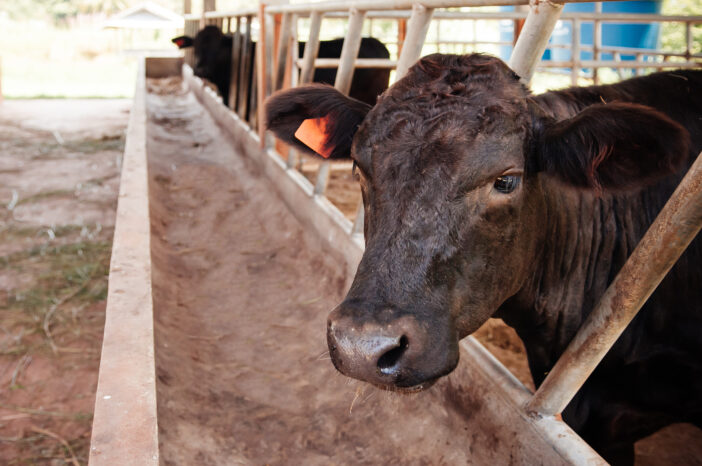
In this section, you’ll learn about the feeding strategies that are key to producing the high-quality, marbled beef Tajima cattle are known for. These techniques build on the foundation of historical feeding practices and modern nutritional insights.
- Adhere to a Strict Schedule: Tajima cattle are fed at specific times throughout the day to ensure consistency and reduce stress, typically in the early morning and late afternoon.
- Maintain Regular Intervals: Feeding intervals are crucial and are typically spaced equally to promote optimal digestion and absorption of nutrients.
- Adjust Frequency Seasonally: Depending on the season, the feeding frequency might be adjusted, with more frequent feedings during colder months to help maintain body temperature and energy levels.
- Measure Feed Portions Precisely: Feed portions are carefully measured to meet the specific energy and nutritional needs without overfeeding, which is crucial for maintaining the desired body condition and marbling.
- Balance Nutrients Effectively: The diet is formulated to have a precise balance of proteins, fats, and carbohydrates, along with essential minerals and vitamins that promote health and enhance meat quality.
- Customize Diets Based on Age and Weight: The nutritional content and portion sizes are tailored based on the age and weight of the cattle to ensure each animal is fed optimally for its particular growth stage.
Impact of Feeding Techniques on Meat Quality
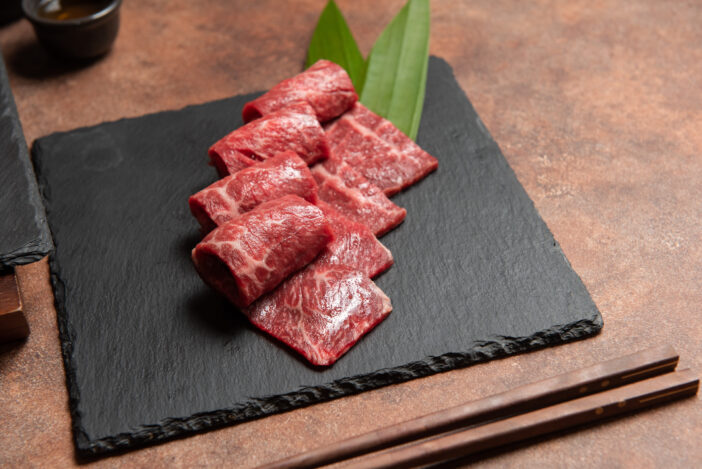
Building on the evolution from traditional to modern feeding strategies, let’s delve into how these techniques specifically influence the meat quality of Tajima cattle, known globally for their premium Kobe beef.
- Tailored Nutrition Plans: By customizing diets based on the cattle’s age and weight, farmers aim to optimize fat distribution throughout the muscle fibers. This results in the highly sought-after marbling, which is essential for the luxurious texture of Kobe beef.
- Controlled Feeding Regimens: Implementing precise feeding schedules with specialized feeds, like corn and soybeans, enhances the intramuscular fat cells’ development. This strategic approach ensures more consistent marbling.
- Balanced Diet Components: The integration of local grains and forage, supplemented with controlled portions of corn and soy, not only supports the cattle’s health but also impacts the beef’s texture, making it tender and buttery.
- Hydration and Feed Timing: The use of pure spring water and meticulous timing of feedings contribute significantly to the meat’s flavor profile. Proper hydration and timely nutrient intake optimize the muscle’s pH levels, crucial for the beef’s taste and texture.
By maintaining these advanced feeding techniques, farmers can consistently produce Kobe beef that meets the high standards of marbling, texture, and flavor desired in international markets.
Innovations in Feeding Techniques for Improved Sustainability
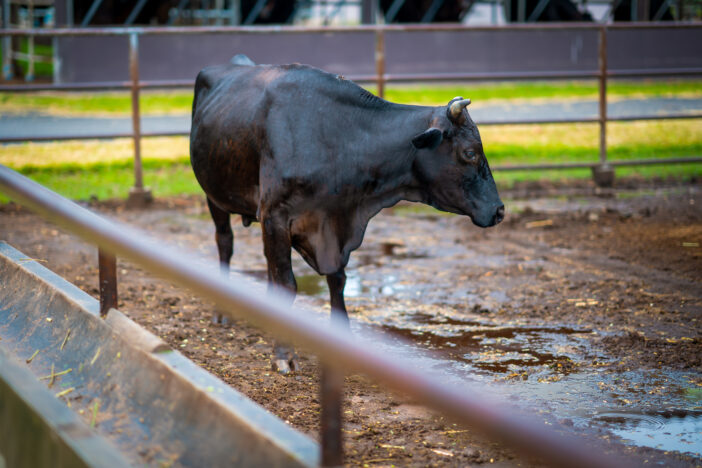
Building on traditional feeding practices for Tajima cattle, recent innovations aim to enhance sustainability while still prioritizing meat quality.
- Utilization of Local Feeds: Farmers are now incorporating more locally sourced, sustainable feeds like rice straw and farm-produced grains. This shift reduces transportation emissions and supports local agriculture.
- Reduced Feed Waste: Systems have been established to minimize feed spillage and optimize consumption rates, ensuring efficient use of resources.
- Supplementary Foraging Opportunities: Allowing cattle more time to graze on natural pastures promotes biodiversity and reduces reliance on processed feed, contributing to a healthier ecosystem.
- Automated Feeding Systems: These precision tools calculate and distribute the exact amount of feed needed per animal, improving feed efficiency and reducing waste.
- Data-Driven Nutrition Programs: Technology now enables real-time monitoring of each animal’s intake and health, allowing adjustments in diet instantaneously to suit individual nutritional needs.
- Sustainable Feed Development Initiatives: Enhanced research on alternative feeds is being powered by AI to identify sustainable, high-nutrient feed options that are less resource-intensive to produce.
Challenges in Tajima Cattle Feeding
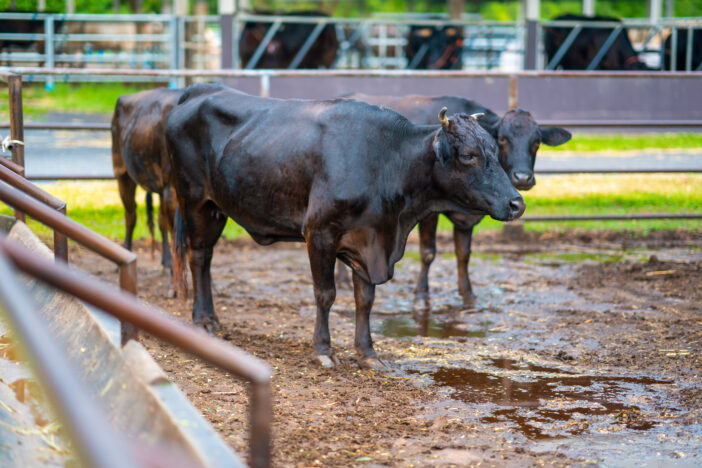
Transitioning from traditional to modern feeding techniques presents unique challenges for Tajima cattle, primarily revolving around cost and feed quality.
- Increasing Feed Prices: The shift towards high-quality, specialized feeds such as corn and soybean has significantly increased feeding costs. Given the high standards required for Kobe beef, opting for cheaper alternatives isn’t feasible.
- Advanced Technology Incorporation: Implementing automated feeding systems and AI-driven nutrition programs involves high initial investment and maintenance costs. The technology enhances efficiency and feed utilization, but the upfront financial burden can be substantial.
- Sustainability Measures: Integrating sustainable practices like local feed production and reduced waste systems also incurs additional expenses. These practices are environmentally beneficial and can improve long-term sustainability, but they require significant capital to initiate.
- Dependence on Specific Feeds: The reliance on particular high-grade feeds like corn and soybeans can lead to vulnerabilities if there are disruptions in supply due to climate events or market fluctuations.
- Quality Consistency: Maintaining consistent feed quality is crucial for meat caliber. Fluctuations in feed quality can directly affect the meat’s flavor and texture, potentially degrading the high standards of Kobe beef.
- Local Feed Variations: While using local feeds such as rice straw reduces transportation emissions, it can also lead to inconsistencies in nutritional value, impacting cattle health and meat quality.
This segment covers how the feeding of Tajima cattle, influenced by modern techniques and sustainability efforts, encounters issues primarily in cost management and feed supply consistency.
Frequently Asked Questions
What traditional diet components contribute to the quality of Kobe beef?
The traditional diet of Tajima cattle includes local grains, forage, and spring water. These elements are crucial for the exceptional tenderness and flavor of Kobe beef.
How have feeding practices evolved for Tajima cattle?
Feeding practices for Tajima cattle have evolved from relying solely on traditional diets to incorporating modern specialized feeds such as corn and soybeans. This transition aims to enhance the quality of meat.
What are some recent innovations in feeding techniques for Tajima cattle?
Recent innovations include the use of local feeds like rice straw and farm-produced grains, automated feeding systems, data-driven nutrition programs, and sustainable feed development initiatives powered by AI. These aim to improve sustainability and meat quality.
How do modern feeding techniques affect sustainability?
Modern feeding techniques for Tajima cattle focus on utilizing local resources, reducing transportation emissions, minimizing feed waste, and promoting biodiversity. This enhances sustainability in beef production.
What are the main challenges in modernizing the feeding techniques of Tajima cattle?
Challenges include the high costs of advanced technology and specialized feeds, maintaining quality consistency, handling variations in local feed supplies, and the overall management of cost and feed supply consistency.






